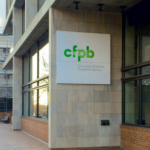Much like the economy itself, an annual report released by the Consumer Financial Protection Bureau that details the financial state of consumers offered mixed signals — more families are having problems paying their bills, but the total is still below what it was before the COVID-19 pandemic, yet the number of people who have enough savings to cover one month’s of expenses is now higher than it was, pre-pandemic. The data may not present an easy-to-understand picture, but it is still important information that can be used to refine collection strategies heading into 2024.
By The Numbers: Overall, 37.8% of consumers had difficulties paying bills or expenses in January 2023, compared with 35.7% a year ago.
- Renters (53.9%) are twice as likely to have problems paying bills or expenses than homeowners (28.4%), and those with student loan debt (46.5%) are significantly more likely than those with no recent student loan debt (35.6%) or those with student loan debt in the past 10 years (36.1%).
- Once people have trouble paying their bills in a given month, there is a decent chance that it’s going to happen again, according to the results of the survey. Only 10% of consumers had problems paying bills once; nearly 40% had problems three or four times, and 22% had problems five to 12 times. For those who had trouble three or four times or five to 12 times, the percentage increased from 2022 to 2023.
- Nearly one-quarter of consumers received financial assistance from friends or family at least once in the past year, compared with 44% who provided it.
The Last Word: Many consumers were showing signs of financial distress in 2023, the report concluded. Through the report, renters appear particularly vulnerable with little ability to cover lost income. Student loan borrowers were also at risk even before the federal student loan payment pause ended. An increase in unemployment might leave many consumers, renters, and student loan borrowers in particular, in difficult financial circumstances.









